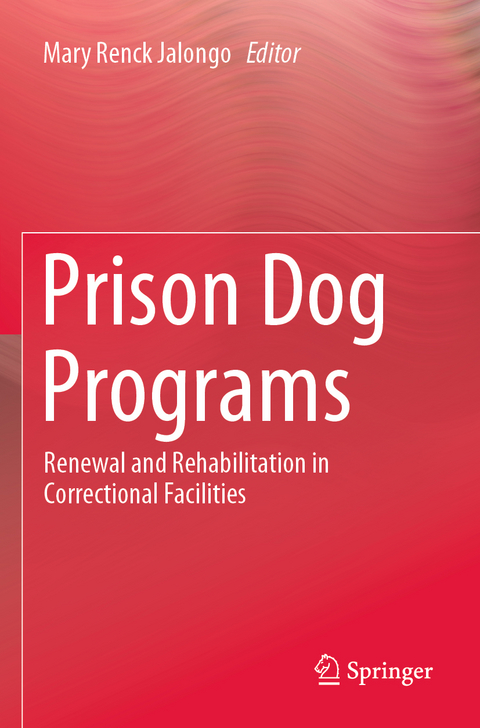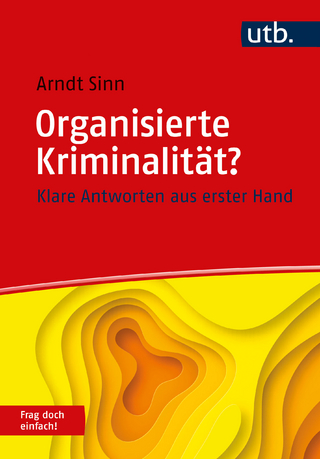
Prison Dog Programs
Springer International Publishing (Verlag)
978-3-030-25620-3 (ISBN)
This edited volume brings together a diverse group of contributors to create a review of research and an agenda for the future of dog care and training in correctional facilities. Bolstered by research that documents the potential benefits of HAI, many correctional facilities have implemented prison dog programs that involve inmates in the care and training of canines, not only as family dogs but also as service dogs for people with psychological and/or physical disabilities. Providing an evidence-based treatment of the topic, this book also draws upon the vast practical experience of individuals who have successfully begun, maintained, improved, and evaluated various types of dog programs with inmates; it includes first-person perspectives from all of the stakeholders in a prison dog program-the corrections staff, the recipients of the dogs, the inmate/trainers, and the community volunteers and sponsors
Human-animal interaction (HAI) is a burgeoning field of research that spans different disciplines: corrections, psychology, education, social work, animal welfare, and veterinary medicine, to name a few. Written for an array of professionals interested in prison dog programs, the book will hold special interest for researchers in criminal justice and corrections, forensic psychology, and to those with a commitment to promoting the ideals of rehabilitation, desistance thinking, restorative justice, and re-entry tools for inmates.
lt;p>Mary Renck Jalongo, Ph.D. is a Professor Emerita at Indiana University of Pennsylvania (IUP) where she served as director of the Doctoral Program in Curriculum and Instruction. In 1991-1992, Mary was named the University's distinguished professor, a university-wide award based on teaching, research, and service.
Her work with Springer Nature includes 25 years of experience as the editor-in-chief of a journal and 13 years of experience as editor of a book series. She has authored, co-authored, and/or edited over 30 textbooks and scholarly works with leading publishers. In addition, she is the recipient of six national awards for excellence in writing.
Her recent research, articles, and books have focused on the human-canine bond. Since 2006, she has volunteered extensively in the community with her registered, trained, and insured greyhounds and collies. She currently serves as an evaluator of handler/ therapy dog teams for Alliance of Therapy Dogs. Since 2015 she has been collaborating with staff from the Pennsylvania State Correctional Institution Pine Grove to teach inmate/trainers of service dogs. Upon successful completion of four courses and training of a service dog, inmates can earn a certificate of completion in dog training and humane education from IUP.
Chapter 1: Introduction: Building a Rationale for Prison Dog Programs.- Chapter 2: Administering Dog Training Programs in Carceral Facilities: The Empirical Evidence of Treatment Effects.- Chapter 3: Exploring Types of Programs: Dog Rescue, Rehabilitation and Training.- Chapter 4: Planning and Implementing a Prison Dog Program.- Chapter 5: Caring for and about Dogs: Animal Welfare Considerations.- Chapter 6: Considering the Correctional Context: Security Issues in Prison Dog Programs.- Chapter 7: Screening and Selecting Inmates for Program Participation.- Chapter 8: Designing and Delivering a Curriculum Matched to Program Goals.- Chapter 9: Evaluating Program Outcomes of Dog Training and Rehabilitation Initiatives in Correctional Facilities.- Chapter 10: Evaluating Outcomes in a Prison-Based Canine Program: A Mixed-Method Analysis of New Leash on Life.- Chapter 11: Pursuing Certification, Licensure and Credentials as Re-entry Tools.- Chapter 12: Exploring Themes of Relinquishment and Loss.- Chapter 13: Making It Real: Neuroscience and the Narrative Mode in Prison-Dog Programs.- Chapter 14: Celebrating the Achievements of Prison Dog Programs.- Appendix: Dog Care and Training in Correctional Facilities: Selected Programs.
| Erscheinungsdatum | 22.09.2020 |
|---|---|
| Zusatzinfo | XXIV, 322 p. 46 illus., 42 illus. in color. |
| Verlagsort | Cham |
| Sprache | englisch |
| Maße | 155 x 235 mm |
| Gewicht | 534 g |
| Themenwelt | Geisteswissenschaften ► Psychologie |
| Naturwissenschaften ► Biologie | |
| Recht / Steuern ► Strafrecht ► Kriminologie | |
| Schlagworte | Alternative Approaches to Corrections • animal rights • Corrections • Dog training • Human-Animal Interaction (HAI) • Inmate Rehabilitation • Inmate Wellbeing • prison environment • Prisons • Quality of Life in Prisons • Re-Entry |
| ISBN-10 | 3-030-25620-0 / 3030256200 |
| ISBN-13 | 978-3-030-25620-3 / 9783030256203 |
| Zustand | Neuware |
| Informationen gemäß Produktsicherheitsverordnung (GPSR) | |
| Haben Sie eine Frage zum Produkt? |
aus dem Bereich


